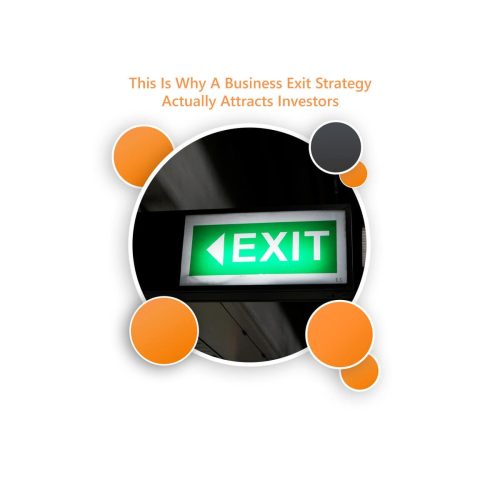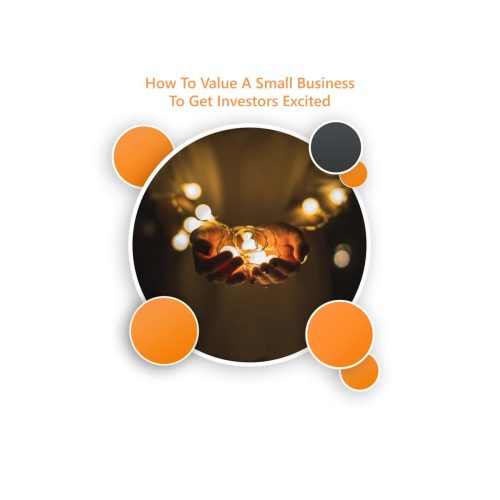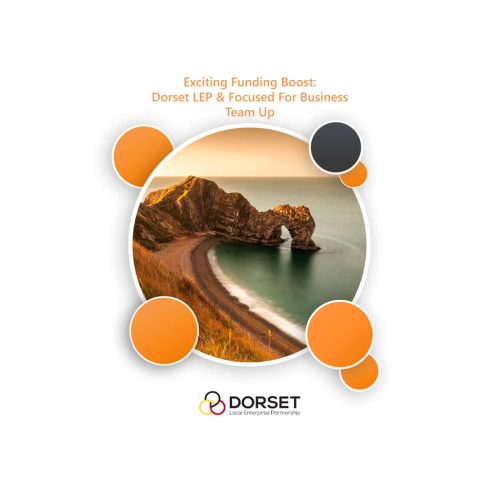One of the first questions you need to answer if you are raising equity investment is: How much money should I raise?
The answer to this question lies in your Financial Forecast, which is why it is one of the most critical investor documents you need to prepare before you start pitching to investors.
In this guide, we explore the different elements you need to consider when financial forecasting for startups, to help you to work out the right amount of funding you need for your business.
Why Financial Forecasting for Startups is important
Financial forecasting for startups shouldn’t just be a tick box exercise and a spreadsheet to show angel investors when you are raising. Instead it should be a process that helps you think strategically about your business, understand its financial levers, and help you plan for the future growth of your company.
The risk of not building a robust financial forecast is that your startup runs out of cash, or misses important milestones, or dilutes your equity unnecessarily. All of which are scenarios you will want to avoid.
How to Determine the Right “Ask” for Your Funding Round
Working out the right “ask” for your funding round is a careful balance between getting enough capital to grow your business and achieve the goals and milestones you’ve set, and not giving away too much equity too soon. If you are trying to work out the right amount of money to ask for when financial forecasting for startups, here are some things to consider:
1. Your current financial position: This is the basis from which you build your forecast from, and you should include:
- Cash on hand: How much money you currently have in the bank.
- Revenue: If you are already generating revenue, how much you generate monthly or annually
- Expenses: Your current operational costs
- Debt: Any outstanding loans or other financial obligations
2. Your growth projections: This is one of the key areas when financial forecasting for startups as it’s where you are able to create some real excitement with investors about the growth opportunities for your business and the ROI they generate – it’s where the “forecasting” in financial forecasting for startups really comes into play. When you build out your growth projections, you should consider:
- Revenue growth: How quickly you expect your revenue to increase – It’s important to be realistic but also ambitious. Investors will be looking for exciting forecasted revenue growth as this will mean a good return on their investment when you exit in the future.
- Market expansion: Whether you’re planning to enter new markets or launch new products
- Team growth: How many new hires you expect to make
- Operational costs: How your operational costs increase as you grow.
Your growth projections are just that – projections, but they should be based on data and reasonable assumptions to justify the growth you’re forecasting, and they will help you determine how much funding you need to support your growth.
3. The milestones you need to achieve: Two of the key questions investors have when looking at your investment opportunity is how you will use their funds, and what milestones you will hit with the investment. The milestones should be clear and measurable, so there is little room for ambiguity. Some examples of ‘milestones’ to include when financial forecasting for startups are:
- Product development milestones: In an early-stage startup this could be when you will be launching your MVP, or when key features on your roadmap will be live
- Customer acquisition targets: The number of customers you aim to have by a specific date
- Revenue milestones: Your expected annual or monthly recurring revenue targets for the next 12, 24, 36, 48, and 72 months
- Profitability: When you expect to reach break-even and become profitable.
The amount that you ask for from investors should be directly linked to achieving the milestones you say you will achieve, so in your financial forecasting for startups you need to demonstrate how the funds will be used to reach these goals.
In order to do this, break down the costs for each milestone by considering what expenses and resources are needed to achieve each milestone. Once you have done this, create a timeline for each milestone where you show when you will achieve each milestone by and demonstrate how each milestone will either de-risk your business or increase its value.
Here’s a hypothetical example of how a startup can link their “ask” to specific milestones.
Financial forecasting for startups milestone examples
Milestone 1: Product Launch
Timeline: 6 months
Funding required: £750,000
Breakdown:
- Development team salaries (5 developers for 6 months): £300,000
- UI/UX design: £100,000
- Infrastructure and hosting costs: £50,000
- Quality assurance and testing: £100,000
- Initial marketing and launch expenses: £200,000
Milestone 2: Acquire 1,000 Paying Customers
Timeline: 12 months from launch
Funding required: £850,000
Breakdown:
- Sales team salaries (3 sales reps for 12 months): £180,000
- Marketing budget: £400,000
- Customer support team (2 staff for 12 months): £120,000
- Product improvements based on feedback: £150,000
Milestone 3: Expand to European Market
Timeline: 18 months from launch
Funding required: £400,000
Breakdown:
- Market research and localisation: £100,000
- Legal and compliance for European operations: £150,000
- Hiring local sales and support staff: £150,000
In their pitch deck and financial forecast, the business would present this breakdown and show how the £2 million in funding directly ties to achieving these specific milestones. They would also include in their projections and pitch deck:
- How these milestones will lead to revenue growth
- What the valuation of the company would be after hitting each milestone
- How achieving these milestones will positively position the company for more growth and the next funding round
Being transparent with your milestones and use of funds will show investors that you are focused on outcomes and that you have thought through clearly the key costs and drivers for growth of your business, and that you have a plan for their investment which in turn will increase the investors’ confidence in you as a founder.
4. The competitive landscape: When you’re raising and financial forecasting for startups it’s important to also consider the wider context as your business is not operating in a vacuum. Things to bear in mind are:
- What your competitors are raising – If your competitors are raising considerably more than you it may be worth altering your ‘ask’ to stay competitive with them.
- How is your market positioned – Does you business operate in a “hot” sector where investors are eager to participate e.g. AI. If so, you could be asking for more.
- The unique advantages you have that might justify a larger (or smaller) raise – If you have a unique advantage over competitors e.g. some proprietary technology. If so, it means you could ask for more.
5. Investor expectations in your industry: Different industries typically have different ‘norms’ when it comes to funding rounds. For example, if you are operating in Fintech you may tend to see people raising larger amounts than other sectors such as education. So when you’re thinking about the amount to raise, research:
- The typical round sizes for businesses at your stage in your sector
- What the milestone expectations are between rounds
- How much equity businesses usually give away in your sector in each round
Taking all these factors into consideration and aligning them with what investors expect will mean that your ask is inline with what they expect and will likely mean less scrutiny. That doesn’t mean that you shouldn’t deviate from the ‘usual’, if you have good reasons to do so then you should, just be ready to justify what you are asking for. It can be hard to find comparative data within your sector which is why Focused For Business provides a number of tools and data sets you can use to find this information as part of their Funding Accelerator programme.
Calculating the Right Amount to Raise: How Much Cash do I Need?
Financial forecasting for startups isn’t just a one-time activity, it should be constantly iterated on and tweaked as your business evolves and you understand more about your market and the operational direction and needs of the company. In the short to mid term though you need to make sure you have enough to execute on immediate plans to hit the milestones you’ve set. When planning your immediate cash needs, bear in mind:
- Operational Costs – This includes salaries, rent, utilities, and other day-to-day expenses.
- Product Development – Factor in the costs of building and improving your product or service.
- Marketing and Sales – What budget you need to acquire customers and grow your business.
- Buffer – It’s always worth including a buffer for unexpected expenses or to cover you if there are any dips in cash flow.
Putting all your costs and revenue predictions into one financial forecast template or business model makes it easy for you to see when cash gets low – or runs out. Investors will be looking at your cash flow statement and deciding for themselves whether you are raising enough money, or when you may need to raise more. Focused For Business provides a financial forecast template as part of their Funding Accelerator programme that makes it easy to display your financial plans for growth to investors. The template helped one startup, who had been struggling to convey their financial forecast to investors, raise investment in just eight weeks. The lead investors said “This is the most detailed and thorough forecast we’ve seen.” When an investor can see and understand your plans for growth they are much more likely to invest in your business.
When doing financial forecasting for startups, be realistic about your cash needs. Underestimating the amount of cash you need can lead to cash flow problems, whilst overestimating can result in unnecessary dilution and less ownership.
In Part 2 of Financial Forecasting For Startups: How Much Money Do I Need we explore some of the key things you should consider when building your Financial Forecast, such as whether it’s better to raise a large amount of funding initially or smaller amounts more frequently. We also cover how your burn rate impacts your runway and how to manage risk in your forecast.
If you’re working on financial forecasting for startups and want to know what a good forecast looks like, our guide takes you through the three key statements that make up a ‘good’ forecast.
Looking to start fundraising soon and are in need of a solid Financial Forecast that brings your growth plans to life? Join our next Funding Accelerator and receive our Financial Forecast template.
- Founders’ Negotiation Tactics: How To Secure The Best Startup Valuation - May 12, 2025
- How To Master Your Sales Lifecycle: Close Deals Faster And Smarter - April 30, 2025
- How To Maximise Your Business Valuation And Attract Investors - April 7, 2025





















